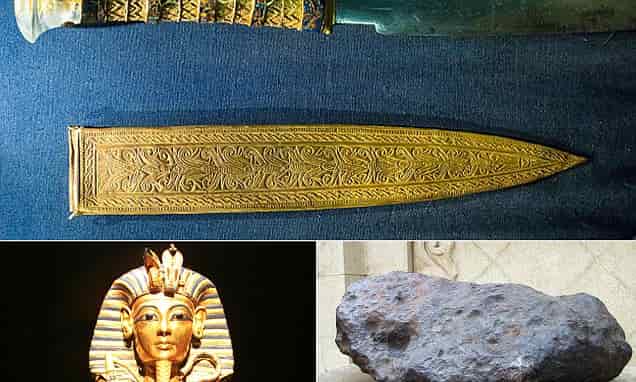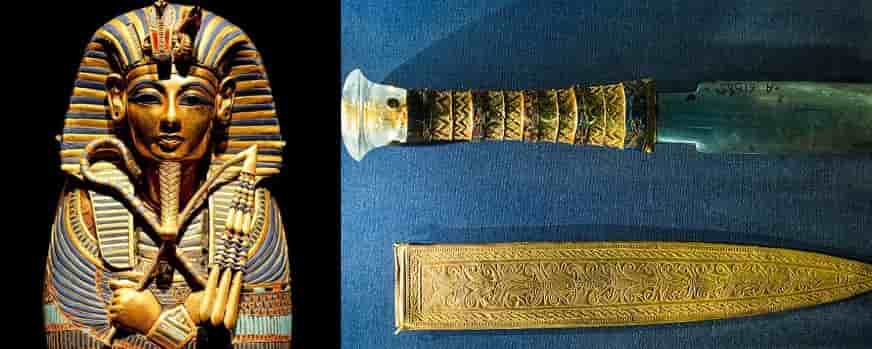The object is part of a collection of two daggers that were revealed inside the coverings that covered the mummified body of Tutankhamun.
During one of the greatest archaeological discoveries of the 20th century, a dagger was found with Tutankhamun’s mummy (1336 BC – 1327 BC) and puzzled archaeologists and researchers for years.
However, in 2016 a group of scientists solved the mystery surrounding the material used to make the dagger, and discovered an impressive fact: its blade was made from “Outer Space” metal. Easy, we’re not talking about aliens.
Before the discovery
The weapon is part of a collection of two daggers – one made of iron and one with a gold blade – that were revealed inside the layers that covered the mummified body of Pharaoh Tut, famous ruler of Ancient Egypt.
The dagger, which has a handle entirely decorated in gold, displays a sheath also made of the same precious metal. The iron dagger, which became the subject of the research, came from a material that, until then, none of the archaeologists had been able to discover what would be made of.
The practice of blacksmithing was not widespread in ancient Egypt, which makes the piece rare and special. In addition, another characteristic that surprised us was the fact that the blade did not show oxidation marks after so many years.
In the last analysis of the specimen, Italian and Egyptian researchers finally discovered the chemical composition of the metal, which presented an unprecedented result.
Large levels of nickel and the existence of cobalt have been identified, which “strongly suggests an Outer Space origin”, says the study that was published in the scientific journal Meteoritics & Planetary Science. But how did it happen?
The researchers believe the pharaoh’s item would have been produced from one of the meteorites that were found at a location 2,000 km off the coast of the Red Sea, in Egypt.
This hypothesis makes sense when we consider the similarities of the materials, and also the fact that at that time the Egyptians gave special value to irons from meteorites, which were generally used in the construction of decorative objects or for exclusive use in the ceremonies of the ancient civilization .
According to the scientists, “in the 13th century BC, they were already aware of these rare pieces of iron that fell from the sky”.
In comparison to other items already found with this same type of iron, the dagger provides a high quality never found before in other objects, which “indicates a mastery of this technique in the time of Tutankhamun “.
The artifact, which was found in 1925, three years after the discovery of Tut’s tomb, is on display at the Egyptian Museum in Cairo.

Who was Tut?
Akhenaten‘s son, he reigned for a few years, between 1,333 BC and 1,323 BC. A very short time for him to have the opportunity to build a legacy, allowing him a tomb with a more luxurious location.
Instead, he was buried in an unlikely place, and many of the objects found in his tomb were not even intended for his burial, bearing the name of someone else recorded on them.
His eternal rest chamber thus had all the signs of having been set up at the last minute, in the improvisation. Pharaoh’s early death was a surprise.
You can read the study, published in Meteoritics and Planetary Science, here.






